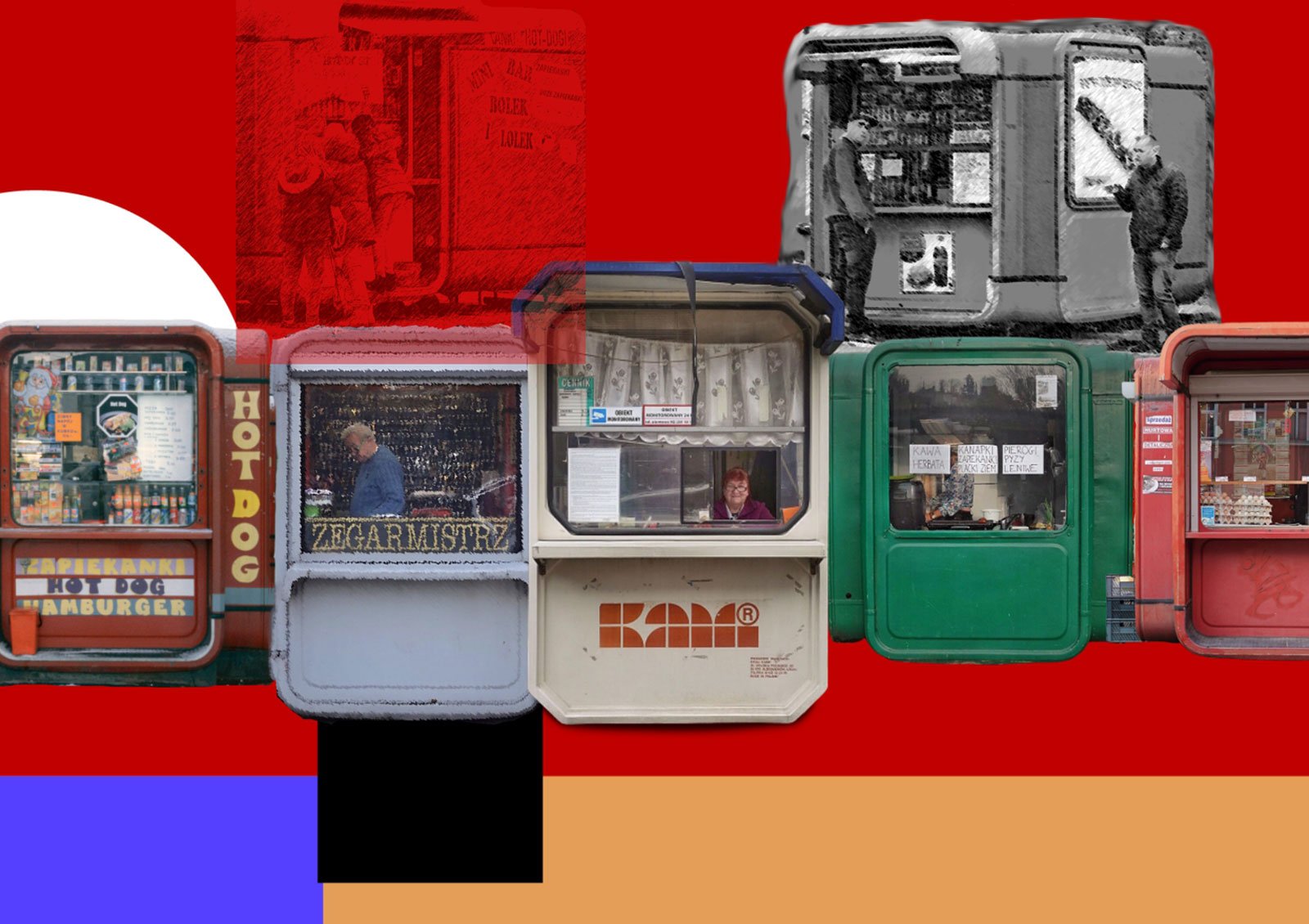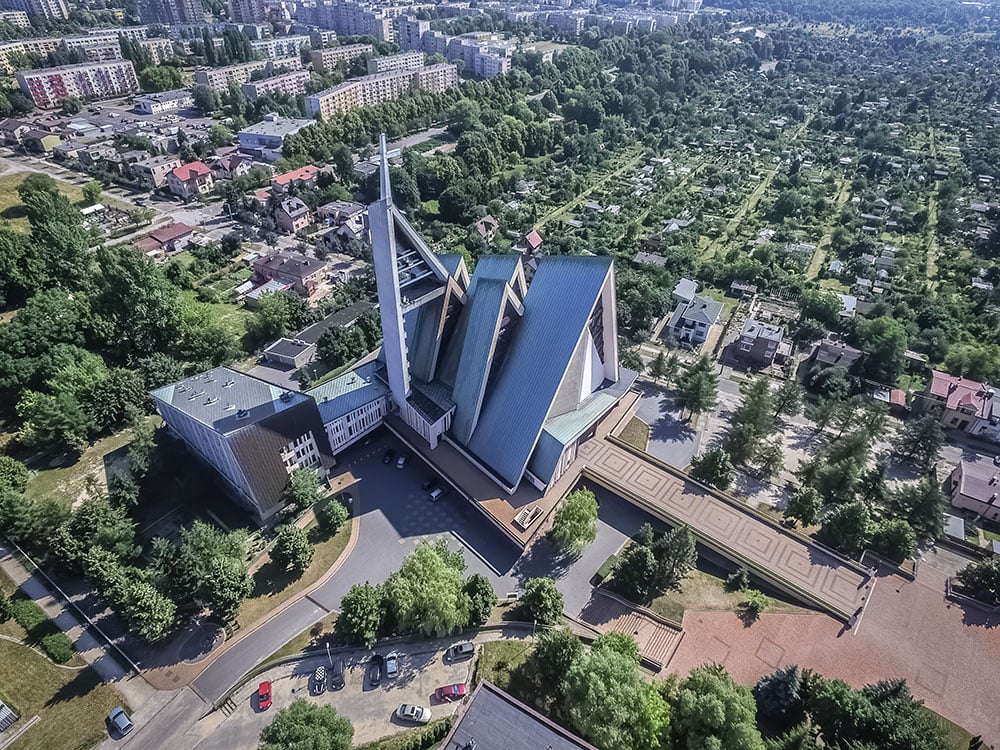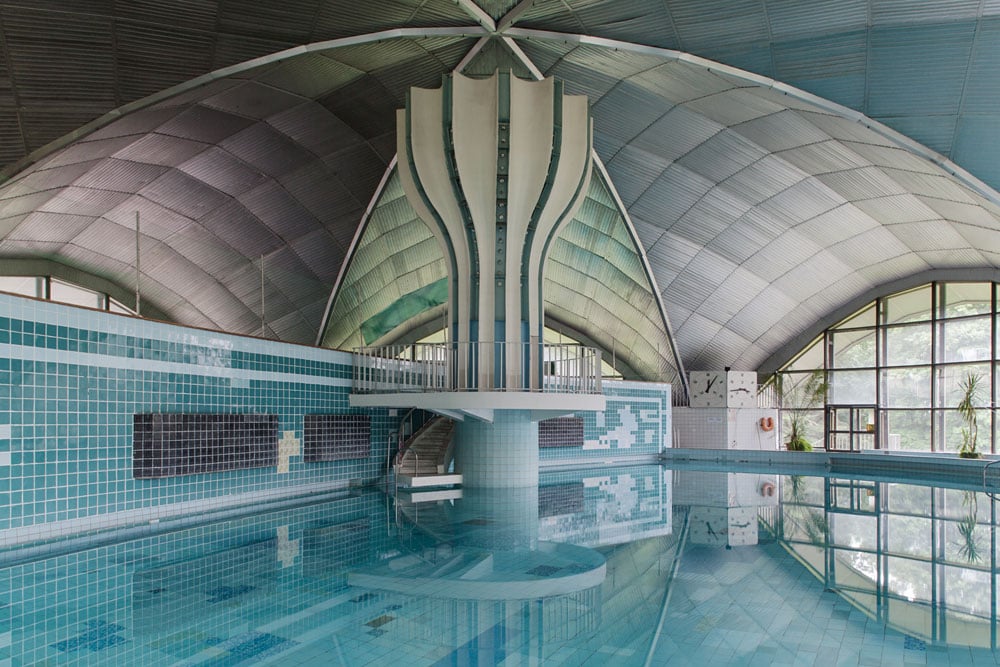Illusions in concrete: the Polish buildings that promised utopia
“Simulacrum is about an attempt to create a utopia, a copy of a vision of a non-existent West,” says Karol Palka. “In these photographs, we see the interiors of buildings that were meant to construct a better world in the People’s Republic of Poland — a world that did not exist for most people, and today often represents an unwanted heritage.”
Born in 1991 in Rabka-Zdrój, a small town in the Polish mountains, Palka is part of a generation born after Soviet rule but surrounded by its remnants. He’s currently finishing his PhD at the Jan Matejko Academy of Fine Arts in Kraków, where his final piece is a film about two women who live deep in the countryside. But his photography, repeatedly returns to the Eastern Bloc’s post-war heritage. His previous series Edifice, which was published and exhibited around the world, won the Fabrika Travel Photography Prize in The Calvert Journal’s New East Photo Competition in 2018. It focused on abandoned Soviet buildings in Poland and the former Czechoslovakia, telling a story of “power and its impermanence”. His new series, Simulacrum, hones in on Poland but returns to Soviet-era buildings, many of which are now falling into disrepair.
Former reading room at the Polish Academy of Sciences, part of the Palace of Culture and Science.
The Palace of Culture and Science stands as a symbol of Warsaw’s destruction and its resurrection under the Soviet-imposed government
As the title Simulacrum suggests, for Palka, this architecture suggests an illusion: a failed attempt to replicate a paradise that actually didn’t exist in the West. Many of the buildings he photographs were constructed with laudable aims, such as ensuring all workers had holidays. In practice, however, they represented false promises, or even something more sinister. The workers’ hotels were widespread but priced out of ordinary citizens’ reach; other resorts were off-limits to anyone outside the party apparatchik. One of the hotels Palka photographed, The Tatry, was restricted to VIPs, and was rumoured to be a shelter for them in case of attack — by the United States, perhaps, or maybe the people they were supposed to represent. The largest investment in workers’ resorts came in the 1970s, just after the Grudzień 1970 [December 1970] protests had been violently suppressed. From this perspective, state-run fun at government-sponsored holiday resorts suggests a system of control, in which architecture was pressed into service to corral the people.
Palka’s series also includes the towering yet controversial Palace of Culture and Science in Warsaw, a “gift” from Stalin that represented a bastion of Soviet power. Less famous, but equally ambiguous, are the 1000 schools built to commemorate the Polish state’s thousand-year anniversary in 1969. On the face of it, it was an inspiring way to mark the event — but the initiative also suggests that if you’re keen to engineer good citizens, catching them young is a great place to start.
Such a reading is ironic in its own way. Palka’s series was funded by the Ministry of Culture and National Heritage of the Republic of Poland, a department of Poland’s current right-wing government. The Law and Justice Party arguably has its own agenda in funding projects which criticise Poland’s socialist past but, as Palka points out, there aren’t many other options for arts funding in the country. Either way, the ministry itself is now obsolete, superceded by a new Ministry of Culture, National Heritage and Sport on 1 March 2021. And Palka prefers not to draw too many direct conclusions from his images, instead leaving his viewers to make up their own minds about Poland’s past.
“People read my photographs very differently,” he observes. “I remember once when my work was published on one of the largest Polish internet portals. People in the comments were arguing among themselves about the history of Poland. They wondered about communism in Poland, and questioned whether communism had really existed here. Some said their lives had been better in those days, others said that my photos were nothing interesting. One wrote that it would be a better idea to photograph the buildings being constructed today by politicians and priests.”
A sanatorium for members of the Central Union of Workers’ Cooperatives (1960). Poland’s post-war authorities attached great importance to holidays. In 1945, the Employee Holiday Fund was established, and in 1952, a provision in the constitution guaranteed all citizens the right to rest. But the largest investment in the construction of new resorts came in the 1970s.
The Tatry Hotel was designed by Stanisław Miroszewski in 1969 and, when it first opened, was considered the most luxurious and stylish hotel in Zakopane, a popular winter destination. It was built exclusively for the Office of the Council of Ministers, which meant that only party and government officials met and holidayed there. Perhaps because of this, the hotel generated some interesting rumours, including the theory it would double as a shelter for state VIPs in the event of an attack. The hotel is located in a forest, on fenced and guarded land, and has a double power supply, oversized ventilation rooms, and fuel tanks which could keep it running for a very long time.
The smallest room in the Palace of Culture and Science
The Palace of Culture and Science. The most pivotal post-war building in Poland, it is also the most divisive and controversial. A “gift” from Stalin, it was built by 3500 Soviet workmen who were housed in a special estate during its construction, surrounded by post-war ruins. It is the eighth-tallest building in the European Union, and one of the tallest on the European continent. Both loved and hated, the palace stands as a symbol of Warsaw’s destruction and its resurrection under the Soviet-imposed government.
The year 1966 marked the 1000th anniversary of the establishment of the Polish state. The Central Committee of the Polish United Workers’ Party decided that state’s celebrations would revolve around the construction of a 1000 new schools: “1000 schools for the millennium”. These images show the last school built as part of this initiative: the Poland Millennium Memorial School, constructed in 1969. Many of these schools are still open today, often externally updated but retaining their original features inside. This mosaic was made at the Kamionka Cooperative in Łysa Góra.
Polish Holiday Resort, built in 1970. By 1976, every provincial town was supposed to have a hotel – but the cost of a single night was far beyond what an ordinary worker could afford. The hotels, resorts, and sanatoriums built by the authorities thus suggested a reality that didn’t actually exist. This resort was small, and perhaps originally belonged to a small workplace or factory.









